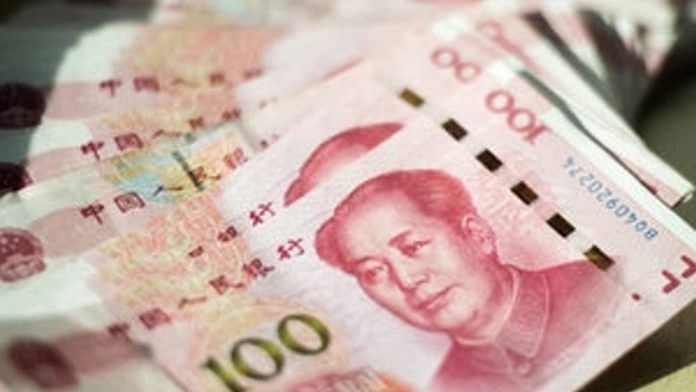New Delhi: Some trade observers have raised questions about what has been described as gaps in data reported by two Chinese agencies — the customs department and its State Administration of Foreign Exchange (SAFE) — about Beijing’s trade balance.
Since 1995, China has recorded a trade surplus in goods, which means exports exceeding imports.
Data figures given out by SAFE and Chinese customs seem to show a trade balance discrepancy of about $132 billion between January 2021 and March 2022.
According to SAFE, the trade surplus stood at $145 billion in the first quarter (January-March) of 2022, and at $562.7 billion for 2021.
This means that, between January 2021 and March 2022, SAFE reported a total goods trade surplus of $707.7 billion.
Meanwhile, Chinese customs or the General Administration of Customs of the People’s Republic of China (GACC) reported a trade surplus of $162.9 billion in the first quarter of 2022. It also showed a total trade surplus of $676.4 billion for 2021.
This comes to a total of $839.3 billion from January 2021 to March 2022, which suggests a gap of $131.6 billion when compared with SAFE data.
There has been speculation that the discrepancy could likely be because China’s merchant traders have been building up massive inventories abroad, suggesting that while goods are flowing out of China, some are being stored instead of sold.
Experts approached by ThePrint for a comment, however, said that overseas inventories play a “minimal” role and the discrepancy in data is “not new”.
Also read: Rupee-rouble romance was for Soviet era. Not trade option now for India-Russia
Experts explain
According to the experts ThePrint spoke to, the discrepancies are a likely result of differences in unrealised and realised trade data.
“This discrepancy is not new. In fact, many countries, including India, register similar gaps in figures due to unrealised and realised trade data,” Biswajit Nag, a professor of economics at the Indian Institute of Foreign Trade (IIFT), told ThePrint.
He added that such gaps in data occur often.
“For example, in India, our DGCIS (Directorate General of Commercial Intelligence and Statistics) trade balance figures are sometimes different from the foreign exchange earnings recorded by the Reserve Bank of India. The main reason is that customs data is ex-ante data. Let’s say, India exports goods worth $100 but some of it got damaged in transit and the importer refused to pay. Then, India ends up receiving $80. DGCIS will record it as $100, before it leaves the country, but the foreign exchange reserves will show $80,” said Nag.
Concurring, Biswajit Dhar, trade economist and professor at the Centre for Economic Studies and Planning at Jawaharlal Nehru University, said the gap in data may have become wider because of Covid-induced delays.
“There are very often discrepancies between actual data and customs data due to over-invoicing or under-invoicing of exports and imports. It is also possible that due to the Covid-19 pandemic, there have been significant shipping delays, so the actual realised data is hitting the books much later, and is therefore widening this discrepancy,” Dhar said.
Reports indicate that Chinese companies currently own over 1,800 overseas warehouses. While experts agree that China does have a large presence of overseas inventory, they say this may not necessarily be driving the gaps in data.
“It is possible that China has storage facilities for goods abroad. Sometimes, this can be for the purpose of trade fairs or, sometimes, these goods are present in transhipment locations like Hong Kong,” said Nag.
Dhar pointed out that “it (data discrepancy due to inventories abroad) is possible, but how much of that can cause this much of a discrepancy?”
“Maybe there is a large presence of overseas Chinese goods kept in warehouses or storage facilities, but they have a minimal role to play as far as the gaps in data are concerned,” he added.
(Edited by Nida Fatima Siddiqui)
Also read: Ban on wheat export is tyranny. It stops farmers from getting a windfall from higher prices



